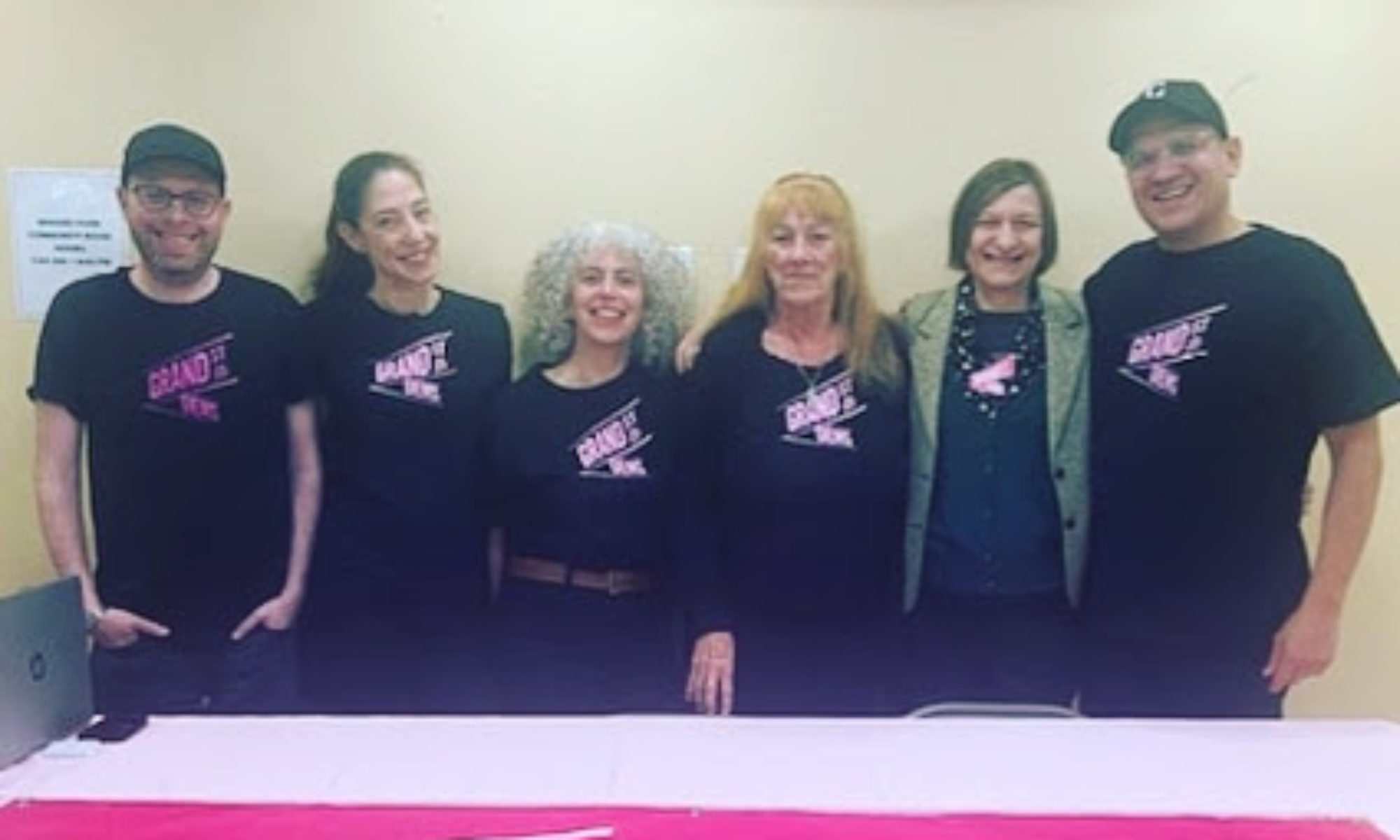Manny Cantor Center was filled Thursday night with 175 residents, half a dozen elected officials, and two high-ranking Department of Transportation officials to talk about the growing traffic problem on Grand and Clinton Streets. District Leaders Caroline Laskow and Lee Berman hosted the event.
The problem is focused on the corner of Grand and Clinton Streets, where cars coming west on Grand Street from the FDR Drive and north on Clinton Street from downtown Manhattan converge before getting on the Williamsburg Bridge. The bottleneck there keeps our streets clogged with honking cars during evening rush hour and late at night, dramatically impacting safety and quality of life. (See Matt Marello’s video to witness the problem.)

How did this come about? Sean Quinn, from DOT’s Office of Bicycle and Pedestrian Programs kicked off the evening with a presentation detailing 10 years of pedestrian safety improvements in the neighborhood that have left these streets unable to cope with the increase in automobiles. Most impactful was the decision in 2012, in response to the growing rate of accidents on Delancey and the tragic death of 12-year-old Dashane Santana, to block left turns from Essex Street onto Delancey and to open Clinton Street as an access route to the bridge. This made it more difficult for drivers to get to the Williamsburg Bridge from the Houston Street exit of the FDR, and pushed them to Grand Street.
Grand Street Democrats members Jeremy Sherber and William Rockwell presented two short-term ideas to relieve pressure at Clinton and Grand. One would force Grand Street drivers to drive past Clinton and make turns on Norfolk or Essex Street to get to the bridge, while allowing Clinton Street drivers to continue to feed onto the bridge. The idea here is that both streams of traffic might flow more smoothly if they were not forced to merge together.

The other idea would be to stop the Clinton Street approach south of Grand Street altogether, making sure drivers from downtown used larger streets like Allen and Essex to get to the bridge. In this scenario, the number of cars on Grand would not decrease, but the flow of traffic would improve, hopefully getting rid of the angry honking.

But even these suggestions don’t address the real issue: these streets are not appropriate for bridge traffic at all. That’s why DOT needs to explore changes that take commuters off these residential streets altogether and push bridge traffic to larger, more appropriate avenues on the perimeter of our neighborhood.

Essex Crossing construction is in full swing and will bring thousands more residents to this neighborhood, along with significant new retail that will draw shoppers, car service pick-ups, and delivery vehicles. The streets directly involved today in feeding the Williamsburg Bridge are facing a major increase in local traffic in 2018. To support the residents and businesses in these new developments, DOT must find some other way for drivers to get to the bridge.
Many residents spoke Thursday about other ideas that need to be explored, including a safer, dedicated left-turn lane from Essex to Delancey; moving bike lanes to streets not also used by so many cars; an exit from the FDR directly onto Delancey; better timing of traffic lights at Grand and Clinton; and a general realignment of tolls that would limit the attraction of the free Williamsburg Bridge to commuters and delivery vehicles. Undoubtedly any comprehensive solution will need to consider all of these options, and more.
Thursday’s large, passionate turnout will help convince the elected officials in attendance that this is an issue of great concern to our community. Grand Street Democrats will continue to put pressure on our elected officials and DOT officials to deliver meaningful results.


3 Replies to “GSD Traffic Town Hall Recap”
Comments are closed.